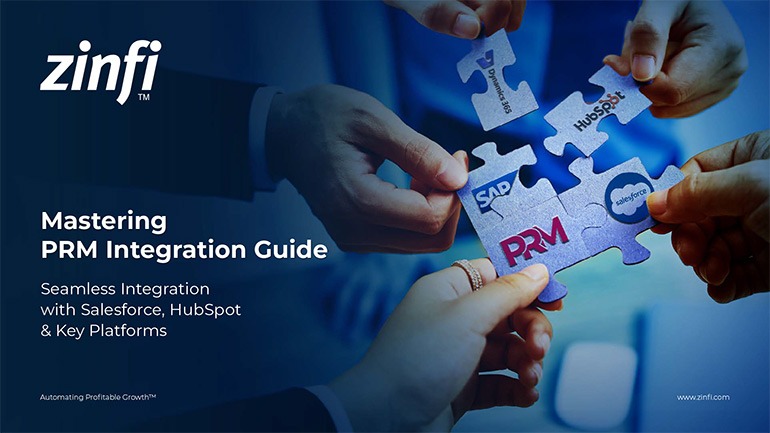Glossary - How to - Partner Marketing Funding Strategies
How to Develop Effective Partner Marketing Funding Strategies?
Introduction
Understanding Partner Marketing Funding Strategies
Partner marketing funding strategies are essential financial plans that enable businesses to allocate funds effectively to their channel partners. These strategies help organizations maximize their return on investment (ROI) in partner marketing programs, using funds efficiently to drive growth and increase brand awareness. Partner marketing funding typically includes Market Development Funds (MDF), co-op marketing funds, and incentives designed to support channel partners in executing marketing activities.
In Partner Relationship Management (PRM), funding strategies are pivotal in ensuring partners have access to the necessary financial resources to execute marketing campaigns successfully. A well-structured funding approach helps organizations maintain strong partnerships and align marketing initiatives with corporate goals. Automating partner funding strategies through PRM platforms can improve transparency, streamline fund allocation, and enhance tracking and reporting mechanisms.
Key Takeaways:
- Establish Clear Funding Objectives:
Businesses must define their funding objectives to create an effective partner marketing funding strategy. These may include:
- Enhancing brand awareness
- Driving demand generation
- Increasing partner engagement
- Supporting new product launches
Establishing these goals allocates funds to activities that deliver measurable results. Organizations should communicate their funding policies clearly to their partners to set expectations.
- Choose the Right Funding Model:
Businesses typically use one or more of the following funding models:
- Market Development Funds (MDF): Pre-approved funds granted to partners to support co-branded marketing efforts.
- Co-op Marketing Funds: Reimbursable funds where partners receive financial support based on their sales performance.
- Performance-Based Incentives: Funds allocated based on partners’ ability to achieve specific marketing goals.
Selecting the right model depends on the company’s objectives, partner maturity, and marketing strategies.
- Implement a Transparent Fund Allocation Process:
A structured and transparent allocation process ensures that partners understand how to access and utilize marketing funds. Best practices include:
- Developing clear eligibility criteria
- Setting realistic funding caps
- Automating fund approval workflows using PRM platforms
- Providing detailed fund utilization reports
Automation through PRM tools reduces administrative burdens, eliminates discrepancies, and ensures compliance.
- Monitor and Measure Performance:
Businesses must track performance metrics to maximize the impact of partner marketing funds, such as:
- Lead generation and conversion rates
- Return on investment (ROI)
- Partner engagement levels
- Campaign success rates
PRM systems with built-in analytics tools enable organizations to track these metrics effectively and make data-driven funding decisions.
- Optimize and Adapt Strategies:
Marketing landscapes evolve, and businesses must continuously optimize their funding strategies, including:
- Reviewing fund utilization reports
- Gathering partner feedback
- Adjusting funding allocation based on performance trends
- Adopting new digital marketing approaches
A flexible funding strategy ensures long-term partner engagement and sustainable growth.
Summary of Key Takeaways:
- Clearly define funding objectives to align with business and marketing goals.
- Choose the most suitable funding model (MDF, co-op marketing, or performance-based incentives).
- Ensure transparency in fund allocation through structured processes and automation.
- Monitor and measure marketing performance using key metrics and analytics tools.
- Continuously refine and optimize funding strategies based on insights and partner feedback.
Key Examples:
- Automotive Manufacturing: Automotive companies use MDF to support dealers in executing local advertising campaigns, such as digital promotions, showroom events, and test-drive initiatives.
- Consumer Electronics: Tech manufacturers provide co-op marketing funds to retailers to launch online and in-store promotions, increasing product visibility and driving sales.
- Energy Production: Energy companies use performance-based incentives to encourage distributors to promote renewable energy solutions, driving sustainability goals.
- Financial Services: Banks and insurance firms leverage partner marketing funds to support co-branded campaigns that promote financial products and services.
- Food and Beverages: Brands allocate MDF to local distributors for regional advertising and promotional campaigns, helping them enhance product reach.
- Healthcare Services: Medical device manufacturers provide co-op funds to healthcare providers for educational webinars and digital marketing efforts.
- Information Technology: IT vendors use MDF to support value-added resellers (VARs) executing lead generation campaigns and customer engagement initiatives.
- Pharmaceutical Development: Pharmaceutical firms fund awareness campaigns by healthcare partners to promote new medicines and treatment options.
- Retail Industry: Retail chains use co-op marketing funds to support suppliers executing seasonal promotions and in-store branding campaigns.
- Telecommunications: Telecom companies provide MDF to resellers for digital marketing campaigns promoting internet and mobile service plans.
Conclusion:
Developing an effective partner marketing funding strategy is crucial to drive partner engagement, improve brand visibility, and increase sales. Businesses can maximize the impact of their partner marketing investments by establishing clear funding objectives, selecting the right funding model, ensuring transparency in fund allocation, monitoring performance, and continuously optimizing strategies.
PRM platforms are vital in automating and managing partner marketing funding strategies, ensuring efficiency and accountability. Organizations that leverage data-driven approaches and industry best practices are better positioned to foster successful partner relationships and achieve long-term business growth.
Associated Keywords:
- Partner Marketing Funding Best Practices
- Co-Op Marketing Funds Management
- How to Allocate MDF Effectively















